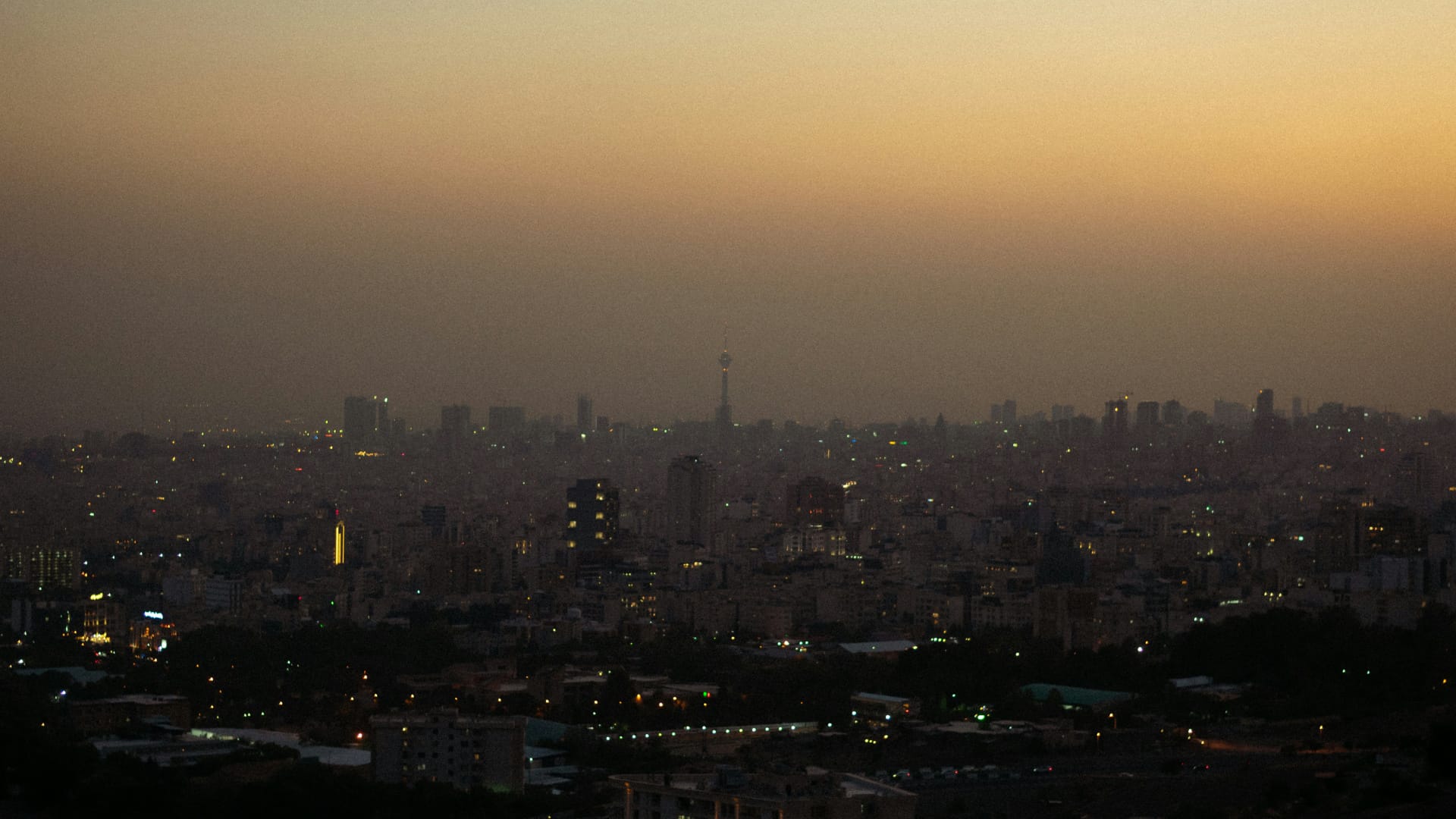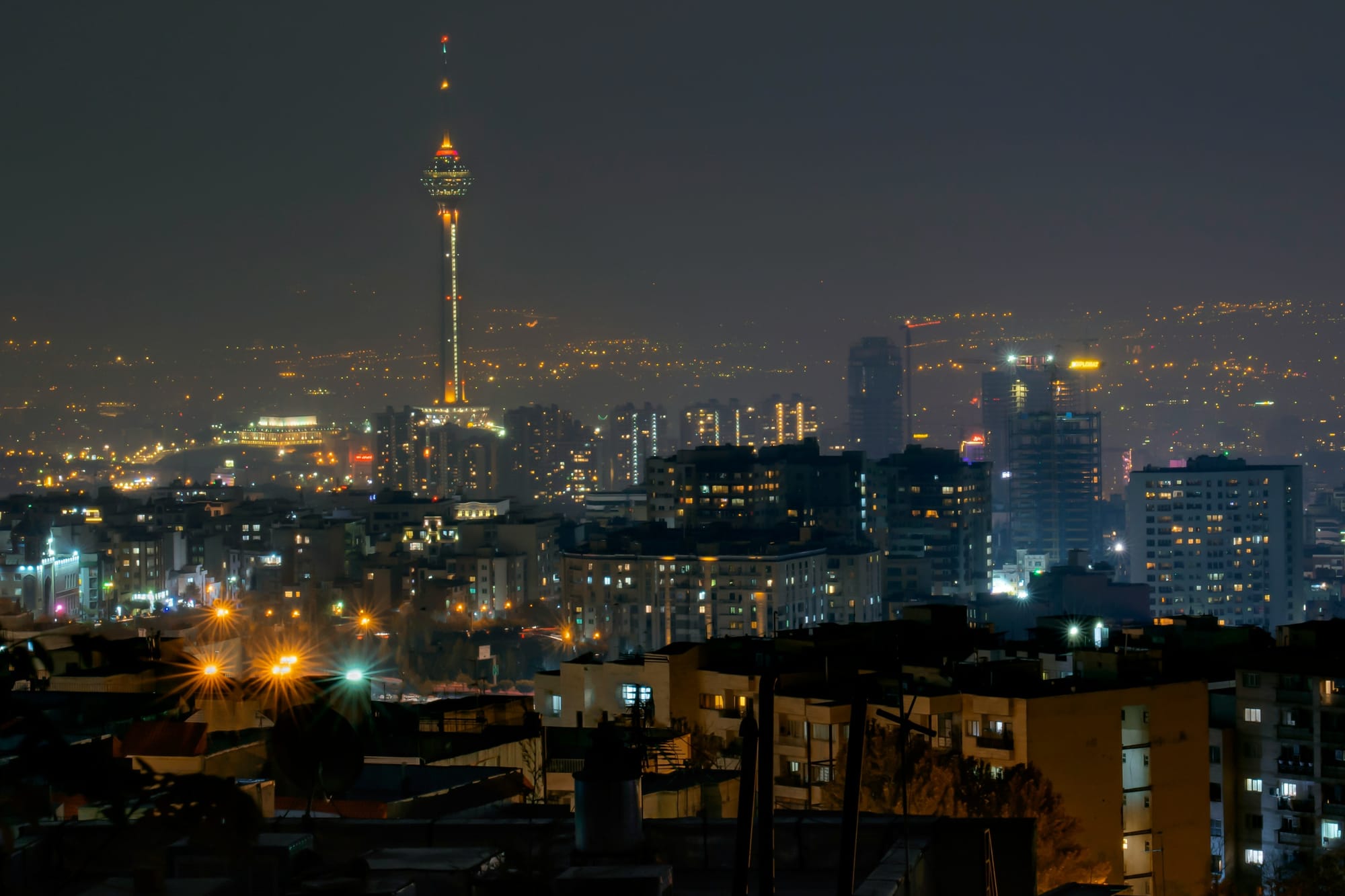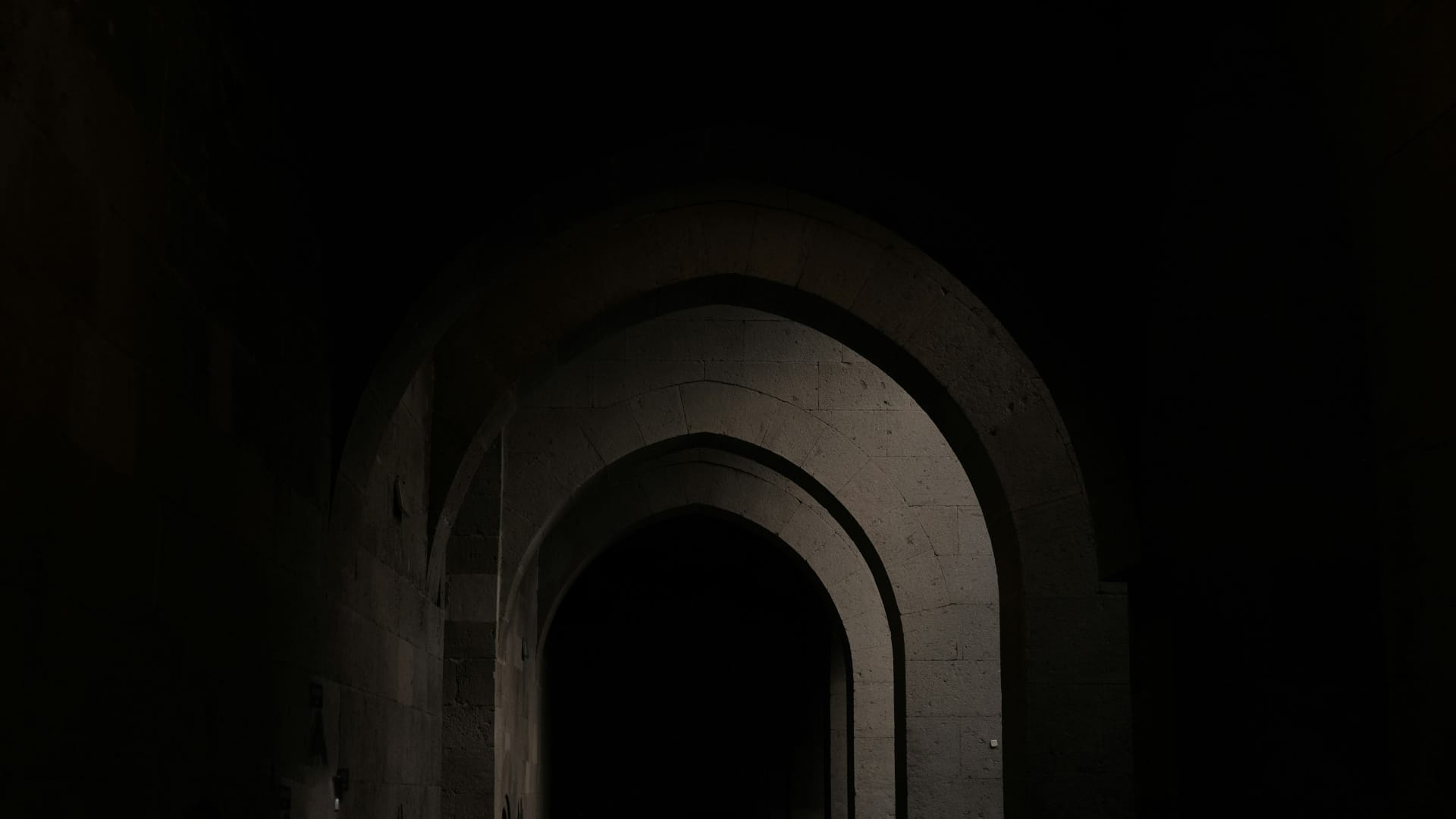The war in the Middle East seems to be changing dramatically.
After Hamas’s brutal and shocking assault on Israel last year, Israel responded with a devastating bombing campaign and ground offensive into the Gaza Strip that’s lasted since—and now includes the killing of Hamas’s leader, Yahya Sinwar. Last month, however, Israel began taking its fight to Hamas’s ally Hezbollah, the powerful militia and dominant political party in Lebanon.
On September 17, thousands of pagers belonging to Hezbollah’s members exploded in Lebanon and Syria. The next day, hundreds of Hezbollah walkie-talkies also blew up. Then, on September 27, Israel assassinated the party’s leader, Hassan Nasrallah, in a bombing raid on southern Beirut. And now, Israel has begun a ground offensive into southern Lebanon and stepped up its airstrikes in south Beirut and other Hezbollah bases. It’s full-scale war on Israel’s northern front.
Meanwhile, the United States is stepping up its involvement, too. On October 18, American B-2 stealth bombers carried out strikes in Yemen against purported underground weapons stores belonging to the Houthis, who’d been launching missiles at Israel to support Hamas.
Together, Hamas, Hezbollah, and the Houthis—who refer to themselves as the Axis of Resistance—have one main thing in common: They get most of their money and weapons from Iran—and Iran is now getting more directly engaged in the conflict itself. On October 1, it fired about 180 ballistic missiles at Israel—though Israel managed to intercept nearly all of them—in what Iran called “self-defense” against Israel’s recent spate of assassinations of Axis leaders.
Exactly what is Iran’s role in this whole conflict?
Alex Vatanka is the director of the Iran Program at the Middle East Institute and the author of The Battle of the Ayatollahs in Iran: The United States, Foreign Policy and Political Rivalry Since 1979. Vatanka says that ever since the Iranian Revolution of 1979, Tehran has followed a single strategy: It arms and funds its proxies to keep up pressure on Israel—and to keep any armed conflict as far away as possible from Iran. Yet now the battle is threatening to come to Iranian territory, leaving the regime in Tehran with a momentous decision to make. It can either stick to its longstanding, unyielding stance against the very existence of Israel, or it can make the compromises necessary for its survival …
Michael Bluhm: How do you see Iran’s involvement here?

Alex Vatanka: I see its policy as having a few main features. First, it was initially very pleased with the outcome of Hamas’s attack a year ago, but it didn’t want the world to think that it was behind the operation. Tehran has consistently said that it supports Hamas generally but didn’t know anything about plans for the assault.
This created the kind of distance Iran needed to continue another major feature of its involvement in the conflict: It funds, arms, and indoctrinates Hamas and Hezbollah.
All of which illustrates the basis of Iran’s strategy: It wants Israel to continue its campaigns in Gaza and Lebanon, because it believes this delegitimizes Israel and reduces international support for them—and for America. Iran used to think time was on its side; it thought Israel was digging its own grave.
But now Iran has created a crisis for itself. By providing missiles, arms, and money to those directly attacking Israel, Iran has conducted its regional strategy on the cheap. Suddenly, Israel is taking the fight straight to the mothership—to Iran. And Iran might have to pay a real price for what it’s done.
Bluhm: As I understand it, Iran and Hamas broke off most ties about 10 years ago, when Iran gave its full support to propping up the regime of Syria’s President Bashar Assad, who’d been fighting against Hamas allies in Syria. What’s the relationship between Iran and Hamas now?
Vatanka: It’s important to remember the historical context. When Hamas was created by Ahmad Yassin in the 1980s, he went out of his way to keep the Iranians at a distance on account of sectarian differences.
Supporting Hamas helps Tehran threaten Israel and project Iranian power. Proxies like this are Iran’s aircraft carriers; they’re stationed 1,500 kilometers away from Iran—but close to Israel.
But after Yassin was assassinated, the next leaders needed patrons, and Iran was the only major country willing to commit itself materially to Hamas’s cause.
Hamas’s decision to back away from Assad—that created some tensions with Iran. But the Iranian leadership never lost sight of the fact that Hamas really didn’t have anywhere else to go.
Ultimately, Tehran doesn’t support Hamas because it likes Hamas; it supports Hamas because supporting Hamas helps Tehran threaten Israel and project Iranian power. Proxies like this are Iran’s aircraft carriers; they’re stationed 1,500 kilometers away from Iran—but close to Israel.
That’s why Iran revived its relationship with Hamas.
Bluhm: What’s the relationship between Iran and Hezbollah, then?
Vatanka: At this point, Iran wants to preserve Hezbollah’s military capacity as much as it can. It doesn’t care about Hezbollah’s political future in Lebanon. Whatever.
Iran is in the same position with Hezbollah that it was in with Hamas after Israel began its offensive in 2023. At the time, Hezbollah started firing rockets at Israel to distract the Israelis. Iran wanted to take some of the Israeli pressure off Hamas, so as to preserve as much of Hamas as possible. The same is true now for Hezbollah—Iran is trying to distract the Israelis in order to preserve as much of Hezbollah as possible.
Bluhm: What about the Houthis in Yemen—how do you see Iran’s relationship with them?

Vatanka: The Houthis have their own agenda: They’re trying to gain legitimacy—in Yemen and across the Arab world—as supporters of the Palestinian cause. The Houthis have a long history of solidarity with the Palestinians. Iran certainly didn’t manufacture this conflict between the Houthis and Israel; it just enabled the Houthis to pursue it.
It’s important to understand, the Houthis are not servants of Iran. They don’t jump every time Iran tells them to. There’s a stark difference in the control Iran has over the Houthis compared to the control it has over Hamas, Hezbollah, and militias in Syria and Iraq.
Bluhm: How much control does Iran generally have over its proxies?
Vatanka: It has some command-and-control structures, but since 2020, when the U.S. assassinated Qassem Soleimani—the head of the Iranian Revolutionary Guard Corps who largely created the Axis of Resistance—the relationship between Iran and its proxies hasn’t been as tight as many outsiders tend to think.
We should remember two things here. One is that wherever they are, these proxies typically emerge from a security vacuum. The Iranians step into that vacuum and create new relationships with existing local groups—or create a new group altogether. They remain loyal to these groups and use them to advance Tehran’s agenda—but the groups themselves aren’t coming to Tehran because Iran has some attractive message to sell. They’re coming to Tehran because they need Iran.
The best example of a security vacuum like this was the emergence of Hezbollah in Lebanon in 1982, amid the ongoing civil war and chaos there. The latest example is Iran’s relatively new relationship with the Houthis, which emerged around 10 years ago in Yemen’s ongoing civil war.
Tehran has long had a simple cost-benefit analysis here: It could spend on proxies to fight its enemies in the region, so it didn’t have to fight these enemies inside its own borders.
The second thing we should remember is that these alliances are two-way streets. Just as the Iranians have shaped the agendas of Arab militants, Arab militants have shaped the agenda of Iran—going back even before the Iranian Revolution of 1979. In that revolution, Iranian allies of Arab militants—allies such as the Palestine Liberation Organization—took over the Iranian state and all its resources. A lot of the anti-Americanism and anti-Zionism in Iran is Arab-militant vocabulary that found its way into Ayatollah Khomeini’s inner circle.
Bluhm: The war in the Middle East seems to be changing dramatically. In the past month, Israel has assassinated a lot of Hezbollah’s top leadership in the past month, and Iran has launched a volley of ballistic missiles at Israel—which is reportedly preparing its retaliation. What does Iran want right now?
Vatanka: To understand what Iran wants, we have to understand the extent to which Iran has uncompromising positions against Israel’s right to exist and America’s presence in the Middle East.
The problem for Iran is that it’s now facing some harsh realities from these positions. One is a security threat: If Israel goes to war with Iran, then the U.S. might enter the fray along with Israel. Tehran has long had a simple cost-benefit analysis here: It could spend on proxies to fight its enemies in the region, so it didn’t have to fight these enemies inside its own borders. Now, though, the conflict that was supposed to stay outside Iran has the potential to come onto Iran’s home turf.
Another harsh reality is Iran’s strategic isolation. Very few countries in the Middle East would side with Iran against Israel. And the Arab countries in the Persian Gulf all want the U.S. to stay put in the region.

Meanwhile, Iran is also facing enormous domestic pressures. A lot of Iranians perceive the current conflict as a war of choice that the regime has brought to Iran. They don’t see it as being their business.
Predominantly, Iranians support the Palestinians, but they don’t see the Palestinian cause as an Iranian national interest. The economy is in terrible shape. We don’t have data on this, but I’d estimate that only 15 to 20 percent of Iranians support the current regime.
Bluhm: So circumstances are moving against Iran; what would be the regime’s goals now?
Vatanka: The regime wants to preserve as much of the Axis of Resistance as possible.
It also wants to change direction for its own survival. Khamenei’s support for the new president, Masoud Pezeshkian, is an example. Pezeshkian is open to the West—and he presents an image of change to the world.
But now Tehran is at a. crossroads. It can pursue its position against Israel’s right to exist or it can back down. And honestly, I can imagine it backing down. I can even imagine a larger deal in which it accepts a U.S. presence in the region in exchange for meaningful concessions from Israel to the Palestinians.
The thing is, the regime isn’t suicidal. Its top priority is its own survival. In 1988, Ayatollah Khomeini signed a ceasefire with Saddam Hussein to end the Iran-Iraq War. That wasn’t supposed to happen. Khomeini had said, We will fight to the end. We’ll fight until we have nothing left. But then he signed a ceasefire, because the regime’s survival was more important than all of this rhetoric. He issued a statement saying, Making this decision was more deadly than drinking a cup of poison—but it was a decision dictated by the interests of the Islamic Republic.
The Islamic Republic’s DNA on Israel makes it hard for them to get out of the situation today. But Iran does respond to pressure.
Today, Khamenei will make compromises. He’s made some already: In April, Iran launched a volley of missiles at Israel in retaliation for Israel’s strike on the Iranian embassy in Syria. But the Iranians worked with the U.S.—through Arab mediators—to determine what Iran could get away with in its strike. Tehran wound up giving a lot of advance notice for the missile attack so it wouldn’t kill many Israelis and escalate the conflict.
The Islamic Republic’s DNA on Israel makes it hard for them to get out of the situation today. But Iran does respond to pressure. Ali Khamenei doesn’t want to be the Islamic Republic’s last supreme leader. In the past, he’s described the Iranian approach with the phrase “heroic flexibility.” Today, that approach could create the space for Iran to retreat from all-out war—to find a way to support the Palestinians without burning the house down.
Bluhm: As I understand it, in Israel’s wars in 1948, 1967, and 1973, it was largely fighting against neighboring countries with Sunni Arab majorities. But since the Iranian Revolution in 1979, Tehran has gradually become the driving force behind regional conflicts with Israel—after many of these Sunni Arab countries have concluded peace deals and opened diplomatic relations with it. How’s Iran’s emergence as the leader of the Axis of Resistance changed these conflcits?
Vatanka: The former PLO leader Yasser Arafat was one of the first Arabs to visit Tehran. He met Ayatollah Khomeini in February 1979. But Khomeini told him, You’re too nationalist. You’re too secular. Embrace Islam. That’s the only way you’re going to get what you want—a Palestinian state.

That wasn’t the message that the PLO wanted to hear. But as the Palestinians became more desperate, they became more willing to work with radical benefactors. They had no one else to turn to. It’s out of necessity, not because they like the Iranian narrative. They definitely don’t consider Ali Khamenei their supreme leader.
As the West shut down UN agencies and wound down humanitarian aid to Palestine, Iran was able to fill the vacuum and buy outsized influence among the Palestinian people.
And as Iran has done time and time again since 1979, it filled a security vacuum.
Decades ago now, After Israel signed peace deals with Arab countries, Tehran concluded that Israel would only respond to pressure—and so the Israelis would only withdraw from Palestine if Iran and its proxies kept up constant pressure on them.
And yet Mohammad Khatami—the president of Iran from 1997 to 2005—said while in office, Whatever the Palestinians can live with, we can live with. That’s been a real tension.
Tehran has been attempting a balancing act between being, on the one hand, a militant, revolutionary state that rejects Israel’s existence and, on the other, a country that attracts investment, grows its economy, and is free from U.S. sanctions. But it’s stuck with the reality that just can’t be both—a revolutionary state and an even remotely normal member of the international community.
